Ten inventive approaches to stashing vehicles enliven the urban environment.
Parking was supposed to be obsolete by now, with millions of autonomous vehicles roaming the roads and private car ownership plummeting. As long as tech companies’ self-driving dreams await fruition, parking structures are still the best way to house vehicles en masse, but they do not have to be monolithic concrete blots on the landscape. Architects are transforming them into works of art with innovative facades, using glazing to enhance visibility in the surrounding area at night and incorporating alternative energy and stormwater management systems. Creative bicycle parking solutions encourage the use of alternative forms of transportation while enhancing the public realm.
The following 10 projects—all completed during the past five years—include a parking structure beneath a canal, aluminum skins that double as works of public art, a kinetic mesh of polycarbonate, an undulating landscape that harbors bicycles under its hills, and a car-handling facility that serves as a canvas for artists’ digital light installations.
Learn more about innovative parking solutions on ULI’s Knowledge Finder.
RON NYREN is a freelance architecture and urban design writer based in the San Francisco Bay area.
1. Albert Cuyp Parking GarageAmsterdam, Netherlands
Canals help keep Amsterdam from flooding, but they also take up a significant amount of land. In the De Pijp neighborhood, constructed at the end of the 19th century without the automobile in mind, parked cars have long crowded the narrow streets. So the borough of Amsterdam-Zuid (Amsterdam South) and the municipality of Amsterdam teamed up to tuck parking underneath the Boerenwetering Canal. Designed by local firm ZJA, the long, narrow structure contains two levels with 600 parking spaces. Ten percent are set aside for visitors; the rest are earmarked for residents with a parking permit.
Glass pedestrian entrances and long one-way ramps along the roadways on both sides of the canal provide access and allow plenty of daylight to stream into the structure below. Above the surface, emergency exits and vents are minimalist in design. Because of the underground parking, the city was able to turn almost all surface parking spaces in the surrounding area into playgrounds, squares, and green spaces. Completed in 2018, the garage also includes spots for 60 bicycles.
2. Asheville Regional Airport New Parking GarageAsheville, North Carolina
As Asheville Regional Airport’s passenger traffic rose, finding an open parking space in its surface parking lots became harder. So the regional airport authority decided to replace 400 surface spaces with a five-story structure that accommodates public parking for 1,100 cars on the upper levels as well as 224 spots for rental cars on the ground level. Because the site is in front of the terminal building’s entrance, the authority asked the designers, Gresham Smith’s Charlotte Aviation studio, to give the new garage an aesthetically appealing appearance.
Both east and west elevations feature a 300-foot-long (90 m) metal screen wall custom-perforated with a supergraphic that embodies the local Blue Ridge Mountains. The perforations let in fresh air and shield occupants from the elements. Precast concrete spandrel panels on the north and south elevations are embossed with mountain ridge imagery as well. A steel-framed canopy protects pedestrians crossing to the terminal’s ticketing lobby and baggage claim area. The structure opened in 2018.
3. Bicycle GarageKungsängen, Sweden
The World Wide Fund for Nature (formerly the World Wildlife Fund) declared Uppsala, Sweden, the 2018 winner of its One Planet City Challenge for its progress in fighting climate change, in part for its success in increasing daily bike trips to more than a third of all travels within the city. In 2019, Uppsala further burnished its bike-friendly reputation by opening a bicycle garage at Uppsala Central Station. With two floors connected by a wooden ramp, the triangular building can hold up to 1,200 bicycles for commuters.
The exposed wood structure is equipped with glass facades and black steel molding, providing a high degree of transparency. In the winter months, Uppsala receives as little as six hours of daylight per day. The extensive glazing allows the building to serve as a lantern at night, illuminating the surrounding area for enhanced safety. Lighting on the underside of the wooden beams can be programmed to change colors, evoking the northern lights. Designed by Stockholm-based Tengbom, the garage includes a vegetated roof topped with solar panels.
4. Cellular OrigamiSan Francisco, California
The University of California, San Francisco, held a design competition to create a new facade for its existing Third Street parking structure in Mission Bay. The previous channel glass facade had failed and been removed in 2015, exposing worn concrete. Meanwhile, prominent new buildings like the Chase Center arena and Uber’s headquarters were in the works across the street. The university wanted to strengthen its identity at this edge of campus. Local firm IwamotoScott Architecture won the design competition with Cellular Origami, which references spiraling strands of DNA in a nod to research taking place at the institution.
Completed in 2020, the new facade consists of silvery anonized aluminum panels cut into four shapes. Organized into vertical strands, these “petals,” each folded in one of five different combinations of angles, reflect daylight at varying degrees of intensity over the course of the day. At night, the panels reflect the light emanating from the nearby Chase Center, eliminating the garage’s need for additional exterior illumination.
5. Center Street Parking GarageBerkeley, California
Home to a number of theaters and other performing arts venues, Berkeley’s Downtown Arts District long relied on a 1950s parking garage that offered an inadequate 420 spaces and no longer met seismic safety standards. The city demolished the structure and replaced it with an eight-level, 720-space garage on the same tight midblock site. Local design architect Marcy Wong Donn Logan Architects, working with architect of record International Parking Design Inc. of Oakland, gave the new building an appropriately artistic presence, equipping its two street facades with sharply folded, perforated steel panels in more than 20 sizes, arranged to suggest two waves flowing in opposite directions.
Programmable LEDs project a color-changing light show onto the metal panels at night. Well-lit, open-air staircases occupy one corner of each facade, red on one side and green on the other for easy wayfinding. Sustainability-minded elements include rooftop solar panels, valet parking for 250 bicycles, electric vehicle charging stations, carshare parking, bioswales to capture rainwater, and a micro-grid hub for emergency power. The garage opened in 2018.
6. Karen Blixens PladsCopenhagen, Denmark
Copenhagen reportedly has more bicycles than people, but its success as a bike-friendly city comes with a challenge: where to park them all. This was especially true at one of the biggest public squares in the city, Karen Blixens Plads, which occupies the heart of the University of Copenhagen campus. Long a merely functional parking area to house bicycles, the space has been remade as a hybrid park and public square, weaving in a variety of places for recreation and meeting, and accommodating up to 2,000 parked cycles.
Local architecture firm Cobe created a new surface of hills and valleys to connect the campus’s three main entrances and the nearby Metro station. With equal amounts of hardscape and landscape, the square provides a transition between Amager Commons—a nature reserve—and buildings. Parking spots are tucked beneath three concrete-domed hills as well as in covered and uncovered “bicycle beds” sunk slightly into the terrain. At night, lighting illuminates the hills from within. Completed in 2019, the square also incorporates rainwater collection and stormwater management systems.
7. Ohio Center GarageColumbus, Ohio
On a spot once occupied by a loading dock for the Greater Columbus Convention Center, a new parking structure contains space for 650 cars as well as displays a work of kinetic art by Sebastopol, California–based environmental artist and sculptor Ned Kahn. Three 3,000-foot-long (900 m) swaths of polycarbonate mesh ripple in the breeze on the structure’s eastern facade. In material and form, Kahn’s sculpture complements the convention center’s long ribbonlike forms, which in turn reference the rail yards that previously occupied the site.
Dubbed Silver Lining, the artwork lends aesthetic appeal to the back of the convention center and serves as a landmark for drivers on the nearby viaduct. Designed for the Franklin County Convention Facilities Authority by local architecture firm Schooley Caldwell, the six-story Ohio Center Garage links to both the convention center and its existing underground garage. The garage opened in 2020.
8. POAL Car Handling FacilityAuckland, New Zealand
The Ports of Auckland play a major role in the metropolitan area’s freight logistics and transport sector. Part of that role involves offloading new and used imported cars, storing them temporarily, and sending them on to dealerships. To free up room on the waterfront and enhance its aesthetic appearance, the Ports of Auckland asked the local branch of Plus Architecture to design a vertical storage building that would allow ships to offload 200 cars per hour.
The western and southern walls of the car-handling facility were wrapped with a 360-foot-long (110 m) digital light wall. Visible at night from land and sea, it hosts large-scale digital installations by local and international artists. Opened in 2020, the building has a 50 percent permeable facade. The southern wall includes what is billed as the world’s largest soil-based vertical garden, with more than 3,800 plants (most of them New Zealand natives) watered by built-in sensors.
9. WanderwallCharlotte, North Carolina
When the Charlotte office of Crescent Communities planned Novel Stonewall Station, a 459-unit mixed-use development along Interstate 277 in Uptown Charlotte, the eight-story parking deck held the potential to serve as a visual barrier between Uptown and the South End neighborhood on the other side of the highway. To prevent this, the developer collaborated with the local nonprofit Arts and Science Council to choose an artist who could turn the structure into a work of public art, as easily read from the freeway as from the sidewalk.
Brooklyn, New York–based Marc Fornes/THEVERYMANY crafted an aluminum screen wall that folds across the south and east walls and embodies the swirl of activity in the district, with eight stories of folded panels in saturated blues and greens. The ultra-thin panels are perforated to let air and daylight through. Completed in 2019, the facade hangs over the parking deck as one continuous piece, with no secondary support structure needed.
10. Wynwood GarageMiami, Florida
In 2009, the Miami office of Goldman Properties commissioned international artists to create murals on the large windowless exterior walls of six warehouses in a former garment manufacturing neighborhood. That helped spark revitalization, drawing art galleries, shops, bars, and eateries, but it also made open parking spaces harder to find. Goldman Properties brought in local architecture firm Wolfberg Alvarez and Partners to design an eight-story mixed-use parking structure and Oakland, California–based Faulders Studio to craft an architectural skin that spoke to the artistic surroundings.
The skin consists of 1,500 unique, irregularly shaped white aluminum panels ranging in height from three feet (1 m) to six stories. Protruding white fins and perforated borders define the edges of panels, and the perforations bring daylight and air to the interior. Completed in 2019, the building includes shops on its ground floor and offices at the top level. (More: Making of Miami Beach’s Mixed-Use Garage)
Learn more about innovative parking solutions on ULI’s Knowledge Finder.
More recent UL10 articles:

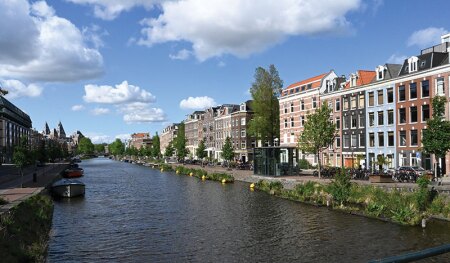
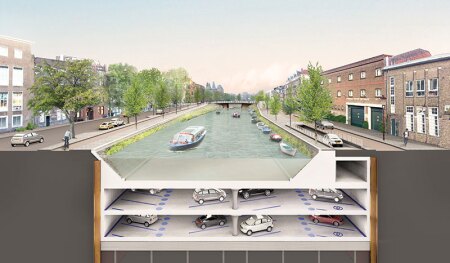


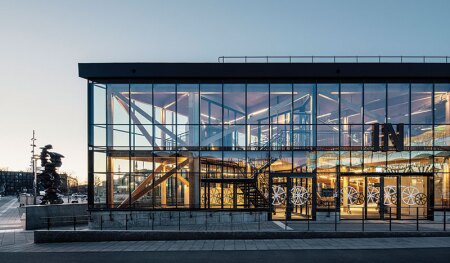
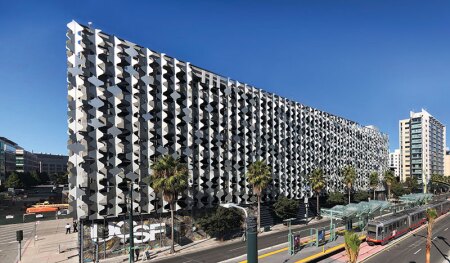
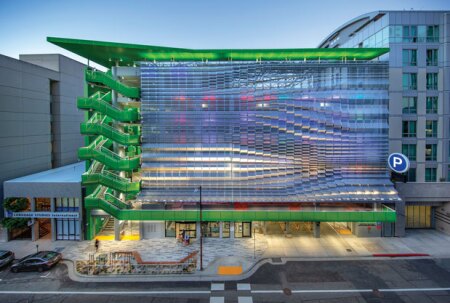
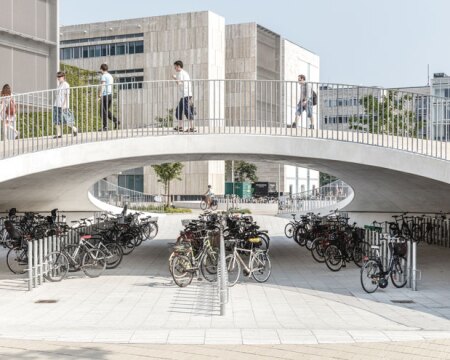


![Western Plaza Improvements [1].jpg](https://cdn-ul.uli.org/dims4/default/15205ec/2147483647/strip/true/crop/1919x1078+0+0/resize/500x281!/quality/90/?url=https%3A%2F%2Fk2-prod-uli.s3.us-east-1.amazonaws.com%2Fbrightspot%2Fb4%2Ffa%2F5da7da1e442091ea01b5d8724354%2Fwestern-plaza-improvements-1.jpg)


